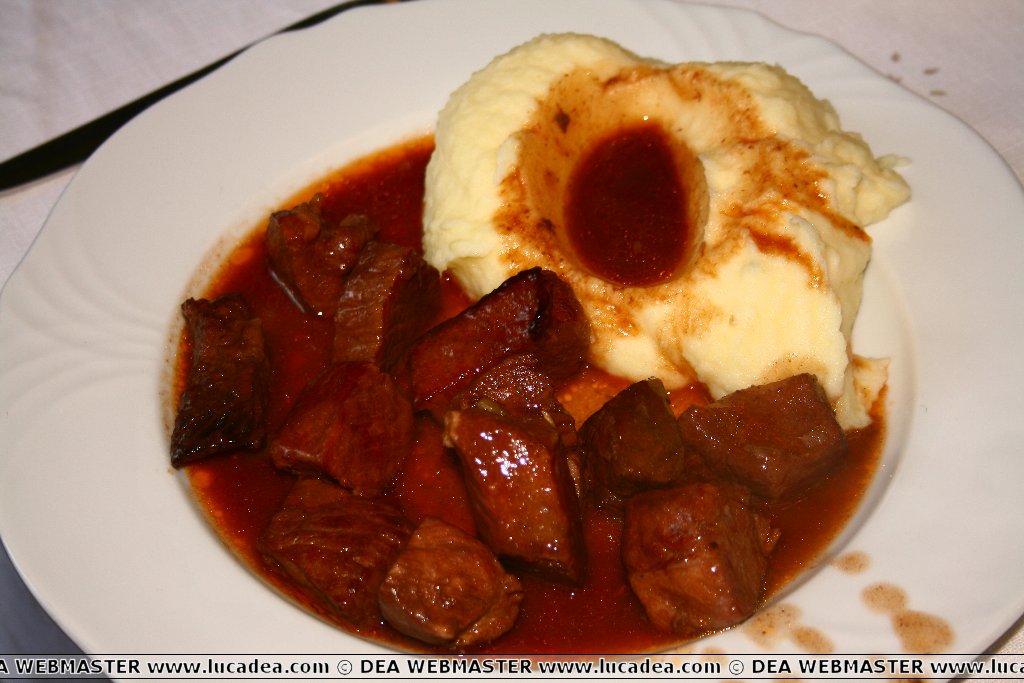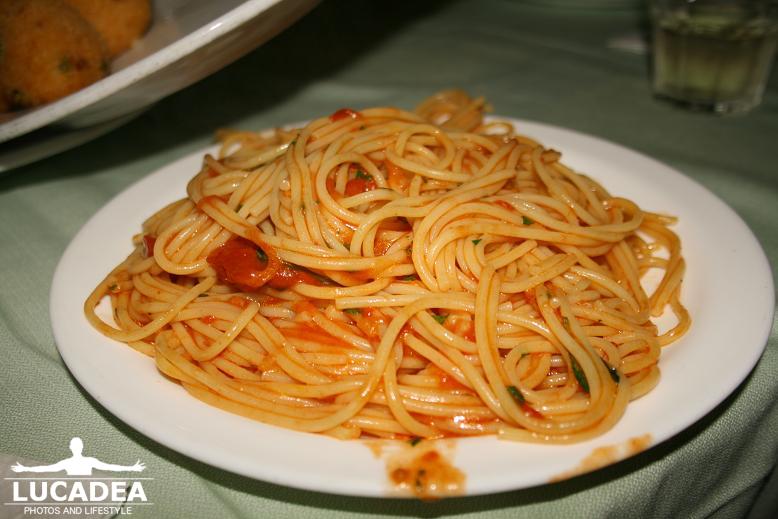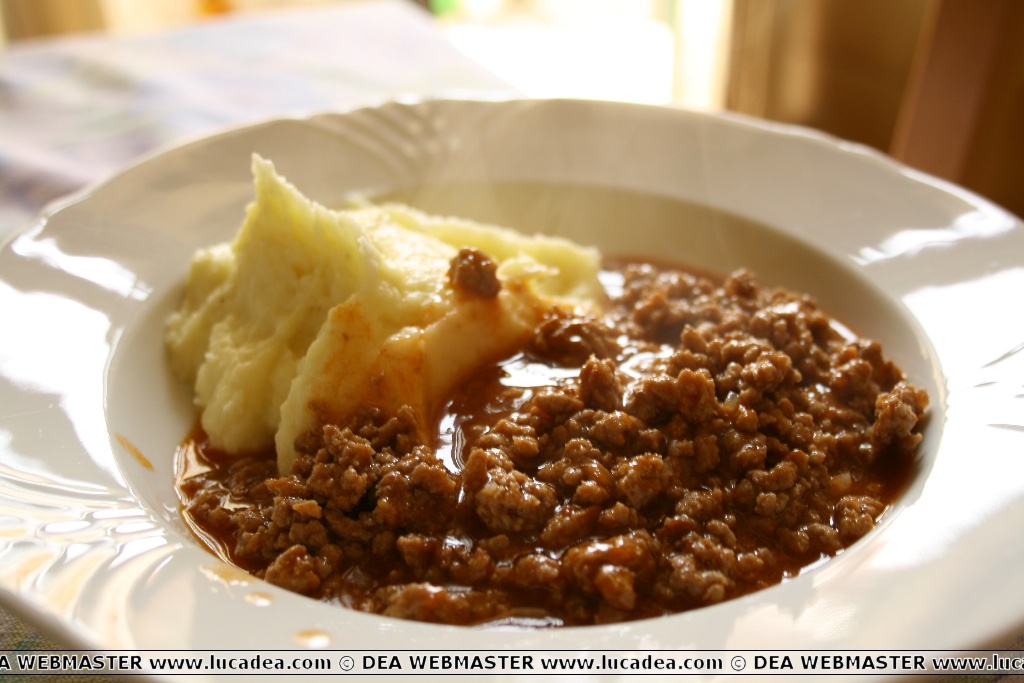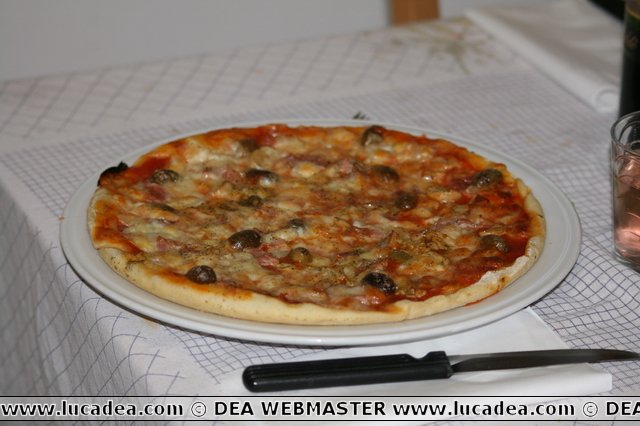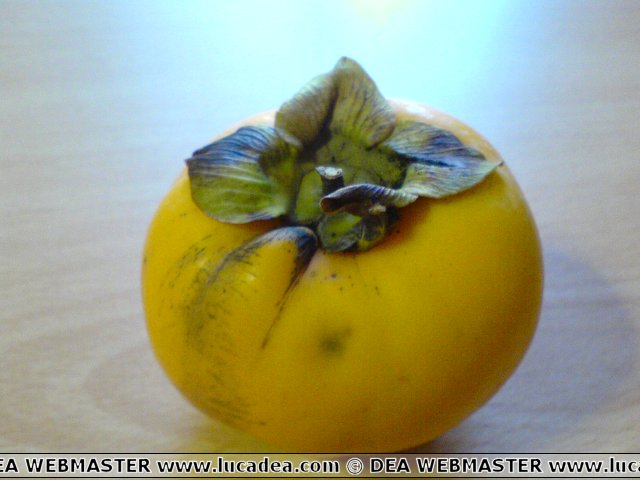Bistecca.
Una bella bistecca alla griglia (che nella realtà, in questo caso, è molto simile ad una fiorentina) è quello che ci vuole per fare un bel pranzetto!!
Spero almeno di farvi venire un po’ di acquolina in bocca!
Carote e piselli
Spezzatino di carne
Spezzatino di carne.
Vi mancavano le mie foto di cose da mangiare?
Ecco cosa ho mangiato oggi, uno spezzatino di carne (che è in pratica una variante del più famoso gulasch ungherese) fatto con carne di manzo, maiale, patate, cipolle e carote (le ultime tre non ci sono nella foto perché non le adoro).
Vi ho fatto venire un po’ di acquolina in bocca?
Si tratta di una preparazione per lo più semiliquida (zuppa), che i mandriani cucinavano dentro un grande paiolo messo sopra un fuoco alimentato dalla legna all’aperto quando, ad esempio, trasportavano i pregiati bovini grigi di razza podolica (razza bovina dalle lunghe corna) dalla pianura della pusta ai mercati di Moravia, Vienna e Norimberga.
Continue and learn more on Wikipedia.
E il mangiare?
Minced meat and mashed potatoes
Minced meat and mashed potatoes.
This is almost certainly one of my favorite dishes: minced meat and mashed potatoes.
I don't even know if it's an Italian or Swiss dish (but from the faint memories I have from kindergarten it seems Italian to me) the fact remains that it really drives me crazy.
And if I tell you how I like to eat it… I like to mix everything until I have a “mush” that usually horrifies all the guests but which is delicious.
Enjoy your meal!
Add your own comment or go to the bottom of the site to read what other visitors have written.
Minced meat or minced meat is meat that has been minced to a more or less fine degree. Community regulations define “minced meat” as boneless meat that has been subjected to a grinding operation into fragments and contains less than 1% salt. In the past, meat was minced with a knife or mezzaluna, in modern times the mincing is done using a tool called a mincer. The mincing of the meat fibres means that minced meat cooks much more quickly than whole meat, in some preparations it is also consumed raw. Minced meat is obtained mainly from beef, veal, pork but also game, minced lamb and poultry are rarer.
Continue on Wikipedia
Minced meat and mashed potatoes – Viande hachée et purée de pommes de terre – Carne picada y puré de patatas – Carne moída e purê de batatas – Hackfleisch und Kartoffelpüree – Thịt băm và khoai tây nghiền – 肉末和土豆泥 – みじん切りの肉とマッシュポテト
A nice plate of pasta, fusilli, with meat sauce
A nice plate of pasta, fusilli, with meat sauce.
Another specialty of my house: my mother's meat sauce.
This time it's the sauce for the fusilli... fantastic.
I know that some of my visitors don't appreciate these images that much but I like them a lot and then, if I know I can make some passerby's mouth water, I'm fine with that!!!
Do you know the recipe for this sauce or do you want to explain to me how you prepare it? Add a comment or go to the bottom of the site to read what other visitors have written.
Ragù is a condiment made from chopped or minced meat, cooked for many hours over low heat, with varying aromas depending on the local variant, and usually with the addition of tomato. The most popular ragùs in Italy are Bolognese and Neapolitan ragù.
Continua ed approfondisci su Wikipedia
The pasta called “fusilli” with meat sauce – Les pâtes dites “fusilli” à la sauce à la viande – La pasta llamada “fusilli” con salsa de carne – A massa chamada “fusilli” com molho de carne – Die Pasta namens “Fusilli” mit Fleischsauce – Mì ống gọi là “fusilli” với nước sốt thịt – 名为“fusilli”的意大利面配肉酱 – ミートソースのパスタ「フジッリ」
Spaghetti with Genoese pesto, the recipe
Spaghetti with pesto, the recipe.
Maybe it's not the official type of pasta to accompany Genoese pesto (trenette or trofie) but making a plate of spaghetti seasoned with that wonder that nature offers us in these parts is spectacular all the same!
And then it's so simple: basil, oil, salt, garlic, pine nuts and cheese.
And tell me I'm not right...
And here is Loris' recipe for spaghetti with pesto:
The basic ingredients of this typical Ligurian sauce are basil, garlic, olive oil, grated cheese and pine nuts.
Now I want to describe some details about some of these ingredients, details that are accompanied by memories of my childhood and of my maternal grandparents, true Ligurians of the eastern Riviera.
– Basil. Nowadays we rightly talk about the basil of Prà which has the perfect characteristics for pesto but once they didn’t even know what it was: my grandfather used to say that the perfect basil without the bad smell of mint had to grow in the shade and that its flowers had to be removed as soon as they sprouted. How could they make pesto on the western and eastern coasts?
– Pine nuts. My grandfather would collect pine nuts under an old pine tree near the house, break their shells and store them in a jar. However, the quantity of them in the pesto was always very limited… When they were finished, my grandmother would buy them an ounce at a time, that is, 25 grams!
– grated cheese: for my grandfather, born in 1886, “cheese” was only Sardinian. He bought one form at a time of the half-aged one, which was consumed sparingly at the table. At the end of the form, the little piece that remained and which in the meantime had become nice and hard was used for cooking, to put on pasta and to make pesto.
– The olive oil must necessarily be Ligurian, due to its characteristics of lightness and fragrance.
Enjoy your meal!
Here I leave you a nice video recipe of GialloZafferano.
Spaghetti with pesto sauce, the recipe – Spaghetti sauce pesto, la recette – Espaguetis con salsa pesto, la receta – Espaguete com molho pesto, a receita – Spaghetti mit Pesto-Sauce, das Rezept – Mỳ Ý sốt pesto, công thức – 意大利面配香蒜酱,食谱 – ペストソースのスパゲッティ、レシピ
A dish of stewed chicken with rice
A dish of stewed chicken with rice.
This is one of the dishes that I like the most.
Stewed chicken with olives and a side of rice. It is very easy to make but I always find it ready and I could not describe the recipe very well... if anyone wants, however, I could find out.
Did I make someone's mouth water? Add a comment or go to the bottom of the site to read what other visitors have written.
A dish of stewed chicken with rice – Un plat de poulet mijoté avec du riz – Un plato de pollo guisado con arroz. – Um prato de frango estufado com arroz – Ein Gericht aus geschmortem Hühnchen mit Reis – Cơm gà hầm
Una ottima pizza fatta in casa da mia mamma
Una ottima pizza fatta in casa da mia mamma.
Forse una foto di questo genere l’ho già messa. Di certo non darà fastidio a nessuno se ne riparlo. Questa è la famosa pizza di mia mamma. E’ veramente buonissima! La cottura avviene in forno elettrico ma, anche se quelle cotte nel forno a legna hanno un gusto differente, si avvicina molto a quella di una pizzeria.
Poi a me, e se qualche mio amico legge magari sorride, piace sempre e solo la stessa pizza: prosciutto e olive. A parte qualche rarissima eccezione in cui prendo prosciutto e wurstel io posso dire di essere un intenditore di prosciutto e olive sulla pizza.
Enjoy your meal!
La prepari mai a casa la pizza? Aggiungi un comment or go to the bottom of the site to read what other visitors have written.
A great homemade pizza from my mom – Une excellente pizza maison préparée par ma mère – Una excelente pizza casera hecha por mi madre. – Uma excelente pizza caseira feita pela minha mãe – Eine ausgezeichnete hausgemachte Pizza meiner Mutter – Một chiếc bánh pizza tự làm tuyệt vời do mẹ tôi làm
Il caco (corretto cachi), un frutto dall’Asia
Il caco (corretto cachi), un frutto originario dell’Asia.
Anche questa foto di un caco era del blog vecchio.
Non è nemmeno un granché però mi ricordo che era carino quello che avevo scritto che suonava, più o meno, così:
“non è l’indicativo presente di un verbo ma un frutto!”
Un bel caco!
Ti piace il caco? Aggiungi un comment or go to the bottom of the site to read what other visitors have written.
Diospyros kaki, originario dell’Asia orientale, è una delle più antiche piante da frutta coltivate dall’uomo, conosciuta per il suo uso in Cina da più di 2000 anni. La sua prima descrizione botanica pubblicata risale al 1780. Il nome scientifico proviene dall’unione delle parole greche Διός Diòs (caso genitivo di Zeus) e πυρός pyròs (grano), letteralmente “grano di Zeus”. È originario della zona centro-meridionale della Cina, ma comunque mai al di sotto dei 20° di latitudine Nord, e nelle zone più meridionali spesso in zone collinari o montane più fredde; Detto mela d’Oriente, fu definito dai cinesi l’albero delle sette virtù: vive a lungo, dà grande ombra, dà agli uccelli la possibilità di nidificare fra i suoi rami, non è attaccato da parassiti, le sue foglie giallo-rosse in autunno sono decorative fino ai geli, il legno dà un bel fuoco, la caduta dell’abbondante fogliame fornisce ricche sostanze concimanti. Dalla Cina si è esteso nei paesi limitrofi, come la Corea e il Giappone.
Continue on Wikipedia



